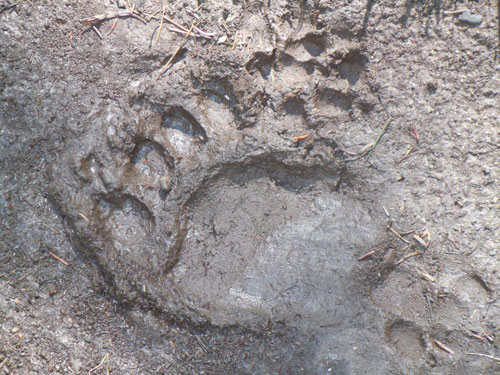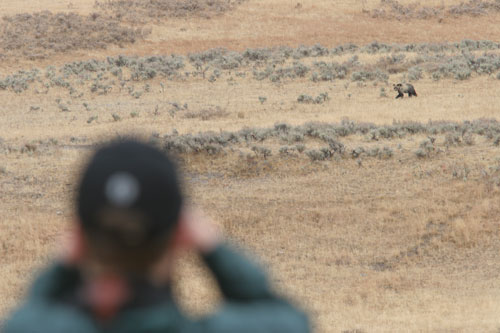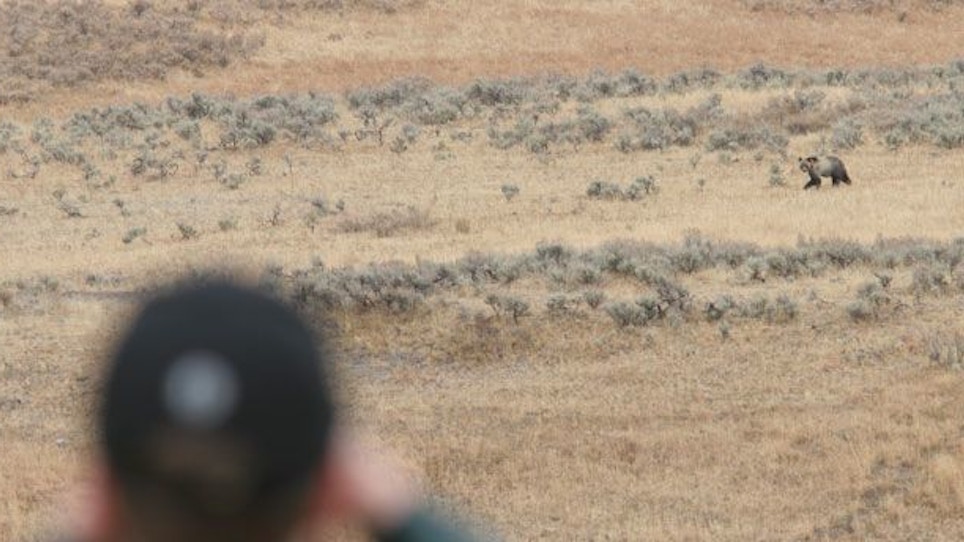 Spring has sprung although the recent weather patterns punishing the midsection of the country with snow and thunderstorms doesn’t necessarily equate to the image of spring weather. Nevertheless, with spring come the annual public service announcements about living with predators. I always know it’s spring in Wyoming when they begin broadcasting grizzly bear warnings as the famished bears emerge from dens hungry and ready to rumble with anything, or anyone suspected of stealing a meal away from them. Grizzlies commonly end up along roadsides scavenging road-killed deer hidden by snow all winter that suddenly appear during the thaw with an odor grizzlies can’t ignore. Black bears across North America are in the same hungry and sometimes angry mood. Other predators are preparing to den and have young, so in brief, predators are generally in a foul mood with a short fuse.
Spring has sprung although the recent weather patterns punishing the midsection of the country with snow and thunderstorms doesn’t necessarily equate to the image of spring weather. Nevertheless, with spring come the annual public service announcements about living with predators. I always know it’s spring in Wyoming when they begin broadcasting grizzly bear warnings as the famished bears emerge from dens hungry and ready to rumble with anything, or anyone suspected of stealing a meal away from them. Grizzlies commonly end up along roadsides scavenging road-killed deer hidden by snow all winter that suddenly appear during the thaw with an odor grizzlies can’t ignore. Black bears across North America are in the same hungry and sometimes angry mood. Other predators are preparing to den and have young, so in brief, predators are generally in a foul mood with a short fuse.
Now you may understand this as a dedicated predator hunter, but does your family, extended family and close friends realize the danger of springtime predator meetings? This is particularly important for small children who might look like a meal for a hungry predator. And as predator numbers surge throughout the country it’s becoming increasingly common for humans, urban and rural, to possibly encounter a large predator.
In almost all cases the best remedy is to travel in groups and make lots of noises. That’s usually easy for kids, but it never hurts to reinforce the group aspect to appear more of a force and add in lots of noise to warn any predators, giving them a head start to skedaddle. If you do come across a predator and it doesn’t see you then it’s best to back away slowly to avoid detection. Never run.
The real test is if you encounter a predator face to face. For lions the answer is to act intimidating while staying calm. Stand tall, spread your arms, maintain eye contact and if necessary, fight back. Lions aren’t looking for a dangerous fight and the more you appear as a threat the better your chances of the cat slinking off without a confrontation.
For wolves the solution is the same as cats. Appear larger than you are, be intimidating and stare them down. If they attack fight back and if all else fails climb a tree. Wolves can’t climb a tree like cats or black bears.
 For bears it’s a slightly different story. Again, stay calm. Unholster and ready your pepper spray if you have it available. Look for a tree, but also stand your ground and appear as a threat by waving your arms and talking loud. You can also slowly back away from the situation, but don’t run. If a tree is nearby and the bear is advancing, now is the time climb it. Even though black bears and some grizzlies can climb trees, if you get high enough you will appear less threatening and the bear may simply leave.
For bears it’s a slightly different story. Again, stay calm. Unholster and ready your pepper spray if you have it available. Look for a tree, but also stand your ground and appear as a threat by waving your arms and talking loud. You can also slowly back away from the situation, but don’t run. If a tree is nearby and the bear is advancing, now is the time climb it. Even though black bears and some grizzlies can climb trees, if you get high enough you will appear less threatening and the bear may simply leave.
If the bear attacks and you don’t have pepper spray, and fighting back appears to be going nowhere, play dead. Drop into a ball, protect your head and neck and hopefully the bear will leave. If the attack continues then you may have to consider a struggle to survive. Your instincts will help you at this point.
Check out these links for more information and share them with friends and family. Above all, stay safe.






